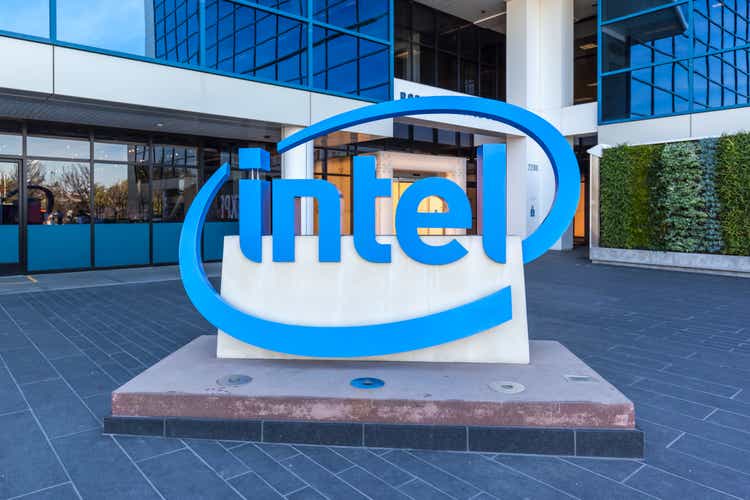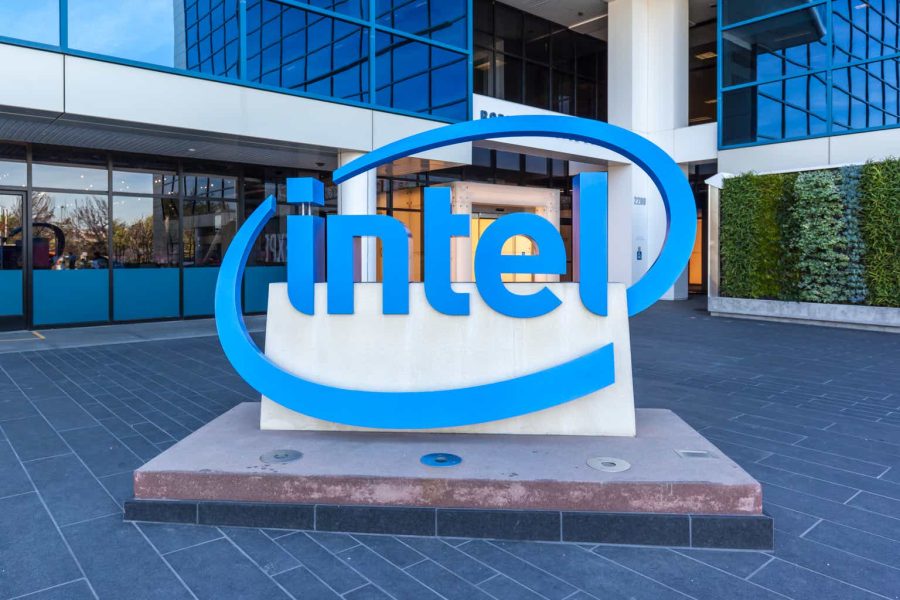Summary:
- IFS reported steep net losses in 2023 with an expectation for 2024 losses to be greater; however, initial foundry investment is inherently expensive.
- Intel’s growth potential in the foundry industry is significant.
- The geopolitical tailwind will likely continue to benefit Intel for the foreseeable future.
JHVEPhoto/iStock Editorial via Getty Images
Introduction
Intel’s (NASDAQ:INTC) stock saw a significant decline in the past few weeks following a financial report on Intel Foundry Services, IFS. The IFS saw a greater-than-expected net loss from operation, with an expectation for the magnitude of the loss to increase in 2024 to reach a trough. As it was the case that IFS was a core part of Intel’s turnaround efforts, a disappointing report caused the company’s stock to dip.
Despite Intel seeing greater than expected losses on IFS with an expectation for these losses to continue into 2024, I remain bullish on Intel. In my previous article, my reasoning for the buy rating was Intel’s continued progress toward its 5 nodes in 4 years goal, which was in line with the management team’s aggressive and ambitious guidance it set out a few years ago. Today, even after the company has confirmed that IFS will see greater-than-expected losses, I believe my bullish thesis is still relevant. The semiconductor foundry business requires a high initial capital investment ranging in tens of billions of dollars and in this industry, Intel is making meaningful progress to become competitive in the near future. Further, beyond the progress the company is making, geopolitical factors will likely continue to be a tailwind for Intel going forward. Therefore, I am maintaining my buy rating on Intel.
IFS Losses
For fiscal year 2023, Intel reported a $7 billion loss on IFS business. The news came out as a surprise to investors, as this occasion was the first time Intel separately disclosed financial information on its IFS business. Further, the negative reaction was amplified by the fact that the company is expecting fiscal year 2024 to have greater losses than 2023 before starting to see a gradual improvement in the following years. The negative reaction was likely also caused by greater-than-expected losses relative to the market expectations for there to be a significant reaction.
Although the magnitude of the losses is staggering, I do not think these measures are enough to justify a negative view of Intel. It is natural for the initial investment in the semiconductor fabrication business to be capital-intensive. Fabrication plants are known to cost billions to tens of billions of dollars, and as is the case, Intel is just starting its fabrication business, so the losses and negative margins will inevitably have to be much higher than industry peers. Thus, I see the staggering losses as necessary investments for the future potential.
To further support this argument of high initial capital costs, we can look at TSMC’s (TSM) fabrication plant investment magnitude in the United States. TSMC announced that the company will be expanding fabrication plant investment in the United States to $65 billion to start production from the third plant by the end of the decade.
As such, as seen also by an industry peer, the capital-intensive nature of the foundry business, in my opinion, justifies IFS’s current staggering losses.
IFS Potential
For the massive investment in the foundry business to pay off, Intel will have to realize significant future potential in the business to make the investments worth it.
Intel is expecting to generate $15 billion from the foundry starting in 2030, and the company is targeting 30% non-GAAP operating margins in the foundry business by 2030. As such, Intel is guiding for about $4.5 billion operating income generation by 2030.
I believe this to be significant. The company currently has a valuation of $161.7 billion; thus, by 2030, the value IFS could generate is attractive. Intel currently has a forward price multiple of about 27.84. For the sake of argument, if we assume that Intel can maintain the forward valuation multiple in 2030 while also assuming that about 80% of the operating income correlates to a net income (this figure is 90% for TSMC), investors could expect IFS to contribute about $100.224 billion (4.5 * 0.8 * 27.84). Of course, the estimation could be drastically different depending on the potential valuation multiple and net income levels, but the point is, that Intel Foundry Services creates a massive long-term upside potential for Intel, making the company’s current valuation attractive when considering the future potential.
Indeed, Intel’s $15 billion goal is not on par with TSMC as TSMC reported 2023 revenue of about $70 billion with an operating profit of $30 billion showcasing an impressive 42.86% operating margin. However, I think we should consider two things when comparing Intel’s future potential with the likes of TSMC. Intel is a much smaller company in terms of market capitalization; thus, the magnitude of Intel’s 2030 expected revenue is enough to move the needle for Intel. Further, TSMC is an industry leader while Intel is playing catch-up. It, in my opinion, is natural, in the short to medium term, for Intel to be a far smaller player.
Technical Progress
There is a reasonable question to ask after the management team portrays an ambitious roadmap. Is this realistic? Is this all possible? I believe the management’s ambitious roadmap is possible and that investors can have confidence in the company’s guidance.
In 2021, Intel announced its ambitious plan to achieve 5 nodes in 4 years. At the time, some investors were skeptical of the ambitious turnaround plan, while some were optimistic. But, fast-forward about 3 years, Intel’s management team has been achieving what they had promised and showed strong execution and progress. As such, I believe they have proven their reliability and competence over the past few years. Therefore, until technical data suggests otherwise, I believe it is reasonable to have confidence in the Intel management team’s ambitious guidance.
Geopolitical Tailwind
In my previous article written on July 23rd, 2022, I covered a geopolitical tailwind that Intel is and will continue to enjoy for the foreseeable future. I will not go too much into detail about why I believe that Intel will see a strong tailwind, but the overview of the argument is that Western governments, especially the United States, long to diversify critical semiconductor manufacturing away from Asia, Taiwan, and South Korea, to within its borders. Not only does primary production focus on Asia can cause national security issues, but it could also hinder the innovation of the advanced American industry, critical to economic, societal, and military prosperity. As such, I argued that will see benefits from the US government.
I continue to stand by this thesis. Even after the announcement that Intel and TSMC will all receive billions of dollars in aid from the US government for bringing semiconductor foundry back into the US border, not just Intel, I still see merit in my geopolitics argument.
As Intel and US semiconductor production is important to the United States, Taiwan will likely also see the importance of producing the most advanced chips in their own country, which creates a lag in advanced manufacturing capability in the United States.
TSMC, in the source already provided, said that the company will produce 4nm chips in the United States by the first half of 2025 with a plan to produce 3nm chips by 2028 followed by more advanced fabrication near the end of the decade. While this news may seem threatening to Intel’s potential geopolitical benefits, that may not be the case. As it is widely known, Intel is already producing 3nm chips at scale, with plans to enter 2nm chip volume production by 2025 and reach 1.4nm by 2027. Thus, the fabrication plant in the US is not the most advanced, opening up a continued geopolitical tailwind for Intel.
The US government first saw value in bringing semiconductor fabrication within the US border, citing national security concerns and innovation. However, if the most advanced chips are still not produced in the US, some supply chain concerns may be mitigated, but the core foundation of innovation and security will still rely on foreign manufacturing capabilities. As such, I believe it is reasonable to assume that the US government will eventually move to restrict the advanced semiconductor sourcing requirements, as was the case for battery electric vehicles.
Risk to Thesis
The fundamental risk to the current thesis revolves around a single question. Will fabless customers choose Intel at scale since Intel is likely a competitor to them building its own AI chips, CPU, GPU, and more? TSMC has an advantage in the sense that the company does not compete with its customers. But, in the case of Intel, this is not the case. Customers will have to provide design information to Intel, who is their competitor, to build semiconductors. Unless Intel can achieve significant technological leadership, the prospect of this happening may be grim posing risks to Intel’s future potential of becoming the market leader.
Summary
Despite Intel’s IFS business losing about $7 billion in 2023 with a greater loss expectation for 2024, I continue to be bullish on Intel. The magnitude at which Intel is investing in the foundry business is as normal as semiconductor manufacturing inherently comes with steep initial capital investments. Further, Intel has massive potential that could be realized from the IFS business, which will likely be aided by the geopolitical tailwinds. Therefore, I continue to believe Intel is a buy.
Analyst’s Disclosure: I/we have a beneficial long position in the shares of INTC, TSM either through stock ownership, options, or other derivatives. I wrote this article myself, and it expresses my own opinions. I am not receiving compensation for it (other than from Seeking Alpha). I have no business relationship with any company whose stock is mentioned in this article.
Seeking Alpha’s Disclosure: Past performance is no guarantee of future results. No recommendation or advice is being given as to whether any investment is suitable for a particular investor. Any views or opinions expressed above may not reflect those of Seeking Alpha as a whole. Seeking Alpha is not a licensed securities dealer, broker or US investment adviser or investment bank. Our analysts are third party authors that include both professional investors and individual investors who may not be licensed or certified by any institute or regulatory body.
